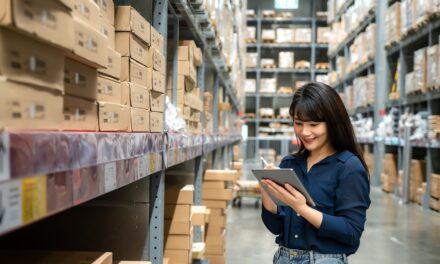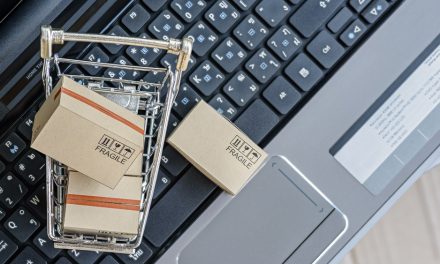
Delivery is all about control

As retailers navigate the systemic shock of COVID, which has unbalanced their channel mix and forced them to rethink how to run both their stores and their online presences; Mike Richmond, Chief Revenue Officer at Doddle says creating and maintaining customer loyalty is more important to them than ever.
We already know that the last mile is crucial to the loyalty picture – 84% of shoppers won’t buy again from a retailer after being let down by their delivery experience. Amazon Prime is the biggest retail loyalty program in the world, and where does it start? Fast, free delivery. ASOS Premier costs just under £10 for a year of free next-day delivery. At face value that price is ridiculously low, which shows just how impactful ASOS have seen delivery to be on the lifetime value of their customers. This is becoming increasingly common across the fashion sector, with Boohoo, Missguided and Next all offering annual next-day delivery passes for between £7 and £20.
Clearly, retailers have great data to show that a fast and free delivery is a huge factor in customer loyalty and lifetime value. But there’s much more to delivery experiences than price and speed.
To really understand the factors that affect the consumer experience of delivery, we can break them down into two categories. In one column, we’ve got the controllable factors, in the other, the uncontrollable factors.
| Controllable – Functional | Uncontrollable – Emotional |
| Speed | Interested in sustainable delivery options |
| Cost | Personally important item |
| Carrier selection | Impact of a missed delivery |
| Pick-up / C&C availability | Likely to return |
Retailers and parcel carriers have spent a massive amount of time and effort working to quantify the impacts of these controllable factors. They’re relatively well understood and fairly linear in their effect. After all, everything else being equal, I’m going to prefer a faster delivery to a slower one. By contrast, the uncontrollable factors are by nature impossible to A/B test, and so retailers and carriers alike seem less interested in finding out how they impact the experience of delivery.
And therein lies a huge opportunity. By investing time and effort in understanding these factors and how they can be mitigated, retailers and carriers pull directly on emotional levers for consumers means they have a disproportionate influence on perception and experience.
Let’s use a personal example. I ordered a nice frying pan from a brand I like a couple of weeks ago. It’s not massively important for me to have it – I have other cookware to use in the meantime. It was delivered a few days late, and that delay made almost no difference to me whatsoever.
Now, the charmingly decorated notebook I purchased so that I could bring it with me when I visited a friend across the country? I was pretty upset that this item didn’t arrive in time, leaving me to figure out a last minute, less thoughtful gift. The value of the notebook was about half that of the frying pan (please don’t tell my friend), but the impact of a similar delay in delivery was much, much more significant to my experience.
I should emphasize that I don’t mean that retailers or carriers can or should magically understand the emotional weight of every single purchase. What they can do is set up their delivery experience to minimise the impact of missed deliveries, changes of plan or urgent needs.
In practice, there’s a number of different options to provide security to those shoppers who have some emotional investment in their order.
- Diverting to local collection point
Missed deliveries are bad for carriers too, causing inefficiency and increasing the cost of deliveries. By using local pickup and drop-off (PUDO) points as backup locations when deliveries fail, shoppers don’t need to be hyper-focused on staying in the house to await a delivery. Sure, many of us are at home much of the time now, but this is far from universal, and will not be the case forever.
In the UK, 75% of consumers live within a mile of 5 PUDO points, and yet it’s still comparatively rare for missed deliveries to be left at one. While other markets where home delivery rules the roost might not have quite such a dense PUDO network, they often experience similar outcomes, where PUDO points are under-utilised by carriers after failed deliveries. That leads to longer waits and more uncertainty which significantly exacerbate consumer anxiety and hurt their perception of the brand they’re buying from. Again, think of the example of the emotionally important parcel. If I’ve missed that all-important knock on the door once, I don’t want to wait for a redelivery if there’s a PUDO counter just two minutes away.
- In-flight redirects
Plans change. Having the option to change a delivery location after the parcel is dispatched from the retailer is massively helpful to shoppers who might have habitually ordered something to home without realising that they won’t be in. It’s not just great for the shopper – for a carrier, the more parcels which are successfully delivered first time, the more cost-effective their delivery operation. On top of that, offering PUDO locations as redirect options gives consumers more options but also allows for more consolidation of parcels, a crucial objective for driving better margin performance.
- Multi-mode PUDO
Pickup and dropoff isn’t just about parcel shops and post offices – it includes branded counters in third party stores, third party stores managing handovers themselves, and locker banks, both in third party locations and in public spaces. Having that mixture of options allows shoppers to manage those ‘uncontrollable’ factors themselves, by choosing the right location to suit their specific needs.
This may often be primarily influenced by distance, with shoppers preferring their nearest possible pickup point, but accessibility also plays a key role. If I have to get that item as soon as possible and I know I’m not going to be able to pick it up 10pm, I’d rather it be delivered to the locker bank a few miles away that is open all night than the grocery store round the corner which will be closed by the time I arrive.
The key takeaway is that having a digital experience for consumers to track and manage their parcel is a fantastic way for posts and parcel carriers to enable shoppers to manage the factors which they as businesses cannot – the personal and emotional stresses of delivery. Doing so offers great benefits for their retailer partners, who avoid frustrating and worrying their customers and protect their brand image and reputation.
In the long term, the customer experience of delivery will continue to evolve towards a more personalised approach on a parcel-by-parcel basis, because consumers will always care much more about the delivery of some of their purchases than others. Until shoppers are encouraged to communicate those factors, the best carriers can do is to give them an array of options to make sure that the delivery experience never destroys brand loyal











